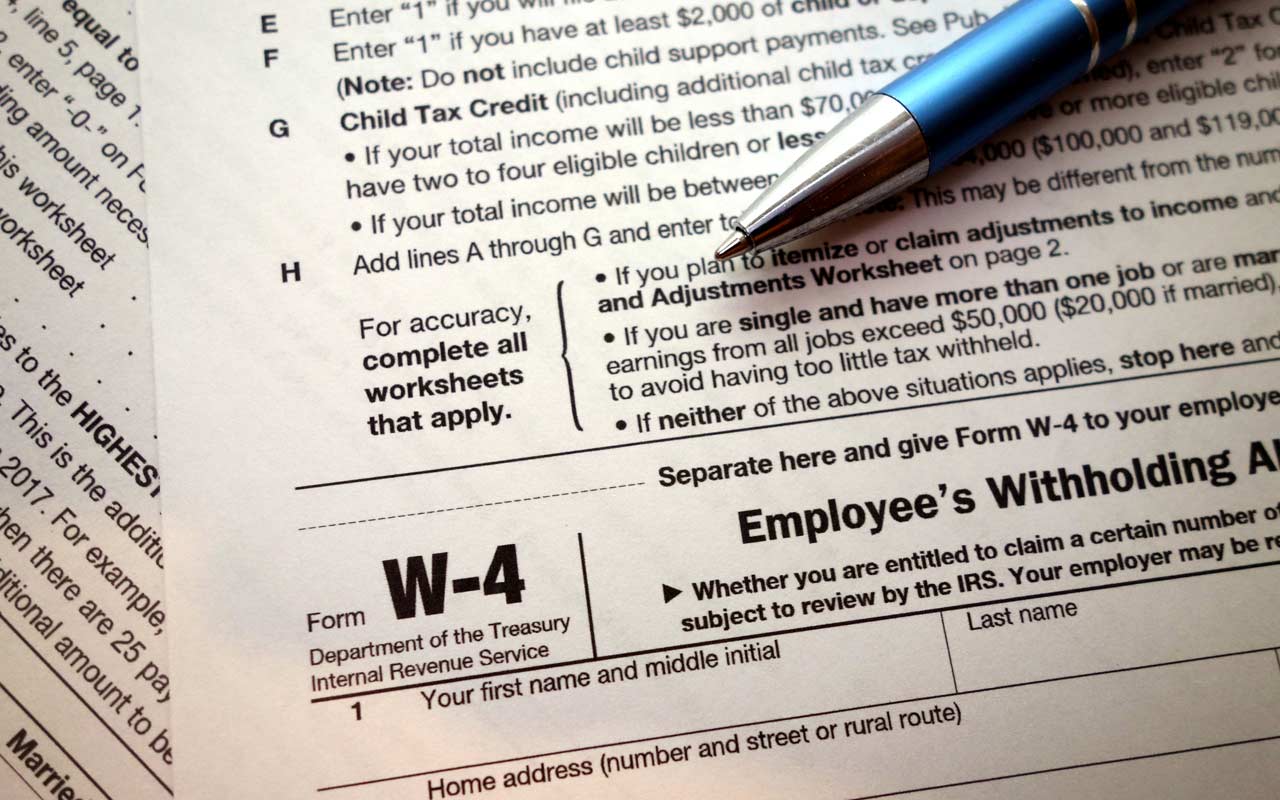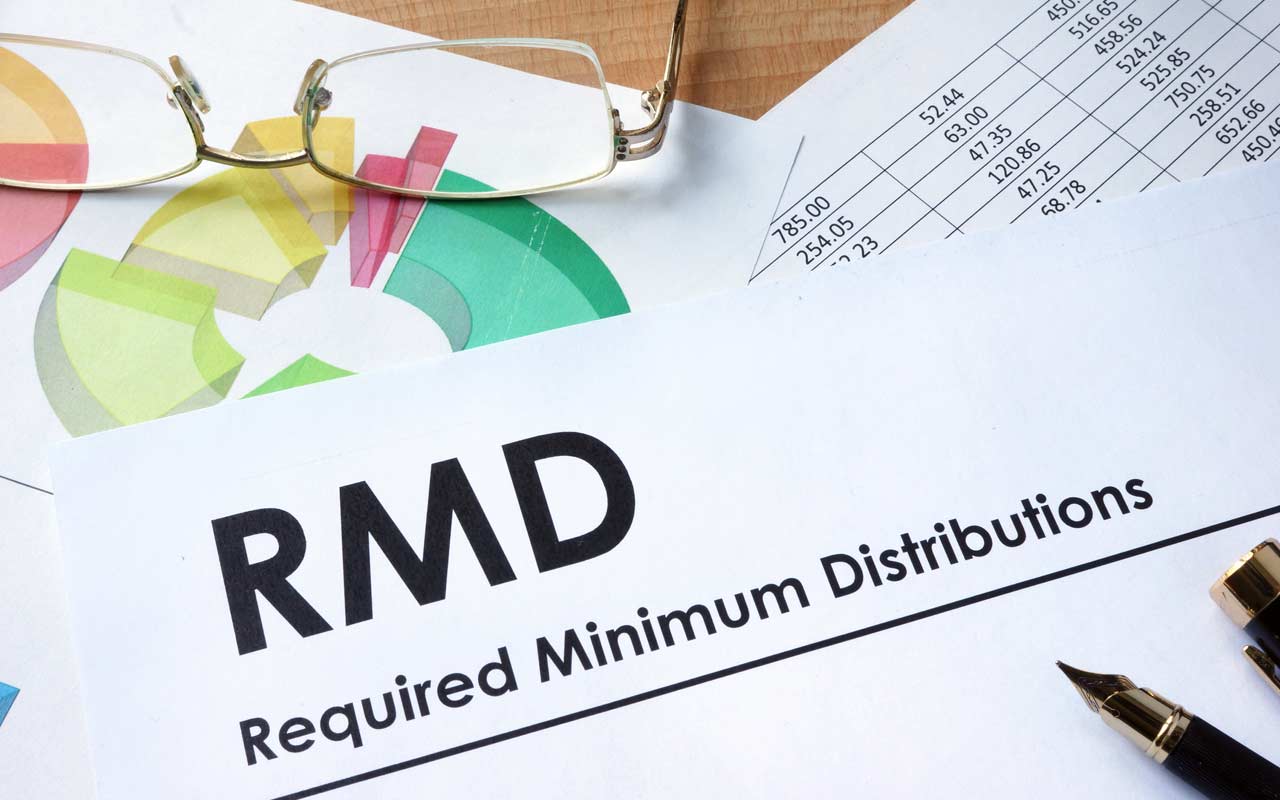27 Money Moves to Make Now to Prepare for 2020
Among the items on our to-do list: Trim your 2019 tax bill by pruning your portfolio and giving to charity.

Among the items on our to-do list: Trim your 2019 tax bill by pruning your portfolio and giving to charity. Boost your retirement-plan contributions. Cash in credit card rewards. We also suggest moves that will boost your bottom line in 2020 and beyond. Take a look.

Harvest Your Losses
You’ll trigger a capital gains tax bill if you sell winners in a taxable account (but not in a tax-deferred account, such as an IRA). But you can sell any stocks or mutual funds that have fallen from the price you paid and use the losses to offset your profits in other investments.
Line up your short-term losses with short-term gains, and do the same with long-term losses and gains. If losses exceed your gains, you can use up to $3,000 of losses to offset ordinary income. Any losses exceeding that can be rolled over—up to $3,000 per year—to future years.

Watch Out for Capital Gains Distributions
If you’re shopping for mutual funds for a taxable account, check the fund’s website before you buy. Otherwise, your investment could saddle you with a big tax bill.
During the month of December, many funds pay out dividends and capital gains that have built up during the year. If you own shares on what’s known as the ex-dividend date, you’ll have to pay taxes on the payouts, even if you reinvest the money.
Before you invest in a fund, call the fund company or check its website to find the date and estimated amount of year-end distributions. The estimates are often reported as a percentage of a fund’s current share price. A distribution of 2% to 3% of the share price probably won’t cause you a lot of tax headaches, but if the fund estimates it will pay out 20% to 30% of the share price, wait until after the distribution to buy—or consider investing in a different fund.

Check Your Withholding
The 2017 tax overhaul lowered tax rates across the board, but it also scrapped some popular tax breaks. As a result, some taxpayers who were accustomed to receiving a refund ending up owing the IRS when they filed their 2018 tax return.
If you were part of that band of disgruntled taxpayers, you may be able to take steps between now and year-end to avoid another April surprise. Use the IRS tax-withholding estimator tool to determine whether you need to file a new Form W-4 with your employer and increase the amount of taxes withheld from your paycheck between now and year-end. You’ll need your most recent pay stub and a copy of your 2018 tax return to help estimate your 2019 income. Because only a few pay periods remain between now and the end of the year, reducing the number of allowances you claim may not make enough of a difference in your withholding to affect your tax bill. Instead, go to line 6 on your W-4 form and fill in the dollar amount you’d like to have withheld.

Pay Some Bills
Unless your finances have changed significantly, you probably have a pretty good idea of whether you’ll itemize or claim the standard deduction when you file your 2019 tax return. If you plan to itemize (or you’re close to the threshold), now is a good time to prepay deductible expenses, such as mortgage payments and state taxes due in January.

Review Your Medical Bills
In 2019, you can only deduct unreimbursed medical expenses that exceed 10% of your adjusted gross income (in 2018, the threshold was 7.5%). That puts this tax break out of reach for most taxpayers. But if you had very high medical expenses this year—due to a major illness, for example—you may qualify.
And there’s still time to schedule appointments and procedures that will increase the amount of your deductible expenses. The list of eligible expenses includes dental and vision care, which may not be covered by your insurance. For the complete rundown, see IRS Publication 502, Medical and Dental Expenses.

Prepay Tuition
If you’re the parent (or grandparent) of a college student, you may be able to lower your 2019 tax bill by prepaying the tuition bill due for the next term—and you don’t need to itemize to claim this tax break. The American Opportunity Tax Credit, which you can take for students who are in their first four years of undergraduate study, is worth up to $2,500 for each qualifying student. Married couples filing jointly with modified adjusted gross income of up to $160,000 can claim the full credit; those with MAGI of up to $180,000 can claim a partial amount.
Likewise, if you’re planning to take a class next year to boost your own career, consider prepaying the January bill before December 31 so you can claim the Lifetime Learning Credit on your 2019 tax return. The credit is worth up to 20% of your out-of-pocket costs for tuition, fees and books, up to a maximum of $2,000. It’s not limited to undergraduate expenses, and you don’t have to be a full-time student. Married couples filing jointly with MAGI of up to $114,000 can claim the full credit; those with MAGI of up to $134,000 can claim a partial credit.

Contribute to a 529 College-Savings Plan
Stashing money in a 529 before year-end won’t reduce your federal tax bill, but it could lower your state tax tab. More than 30 states allow you to deduct at least a portion of 529 plan contributions from state income taxes. In most states, you must contribute to your own state’s plan to get the tax deduction, but several states allow you to deduct contributions to any state’s plan. Check out your own state’s rules at www.savingforcollege.com. Many states allow grandparents and others to contribute to your child’s plan, and a few will allow them to deduct those contributions, too.

Look Into an ABLE Account
If you or someone in your family has special needs, you can contribute up to $15,000 this year to an ABLE account, which allows people with qualifying disabilities to save money without jeopardizing government benefits. You don’t have to invest in your own state’s plan, but if you are a resident of one of the 10 states that offer a tax break for ABLE accounts, you can deduct your contribution. For more information, read ABLE Accounts Give Disabled More Financial Freedom.

Make Year-End Gifts (No Wrapping Required)
In 2019, you can give away up to $15,000 to as many people as you want without filing a federal gift tax return. As long as your gifts remain below the limit, they won’t eat into your exemption from federal estate taxes.
The exemption is currently $11.4 million—a lofty $22.8 million for a married couple—but don’t assume you’ll never have to worry about estate taxes. The current exemption is scheduled to revert to about $5.5 million in 2026 (unless Congress moves to raise it), which would significantly increase the number of estates subject to federal estate taxes. And depending on the political landscape, the exemption could be dialed back even sooner than that, says Joe Maier, a senior wealth manager with Johnson Financial Group, in Racine, Wis. Democratic presidential candidates Elizabeth Warren and Bernie Sanders have proposed lowering the threshold to $3.5 million.
Giving away money now will also reduce the likelihood that your estate will be hit by state estate or inheritance taxes. Twelve states and the District of Columbia levy their own estate taxes, and some have much lower thresholds than Uncle Sam. Plus, six states have inheritance taxes, and Maryland has both.

Give to Charity & Get a Tax Break
Many charities receive the bulk of their annual contributions during this time of year, and it’s not just because people want to share their good fortune. In the past, many people gave before year-end so that they could also deduct their good deeds on their tax return. But the new tax law nearly doubled the standard deduction, reducing the percentage of taxpayers who itemize from about 30% to 10%.
Now that you’ve filed your 2018 tax return, you should have a pretty good idea of whether you’ll itemize in 2019 or join the majority of taxpayers who claim the standard deduction. But if you’re on the fence, timing your charitable gifts can lower your tax bill—which means you’ll have even more money to support the causes that are important to you.
Here’s how it works: Instead of giving the same amount to charity every year, combine several years of donations into a single year so you’ll have enough deductions—along with other deductible expenses—to itemize. In your off years, claim the standard deduction.
If you want to continue to support your favorite charities during your off years, consider contributing your lump sum to a donor-advised fund. These funds allow you to make a large deductible donation in one year and decide later how to dole out the money. Most financial services firms offer donor-advised funds. The minimum investment at Fidelity Charitable and Schwab Charitable is $5,000.
In addition to cash, most large donor-advised funds will accept donations of appreciated securities, and after the long run-up in the stock market, that can be a particularly tax-savvy strategy. As long as you’ve owned the securities for at least a year, you can deduct the fair market value of the securities when you donate them. You won’t have to pay taxes on the capital gains, and the charity won’t either.

A Charitable Giving Strategy for Retirees
If you’re 70½ or older and have more money in a traditional IRA than you need, you can help your favorite charity and lower your tax bill by taking advantage of a tool known as a qualified charitable distribution.
A QCD allows you to donate up to $100,000 from your IRA directly to charity. The transfer will count toward your required minimum distribution. The contribution isn’t deductible, but it won’t be included in your adjusted gross income.
Lowering your AGI could help you avoid the high-income surcharge for Medicare parts B and D, and it could also reduce the percentage of your Social Security benefits subject to taxes. To take advantage of this break, your donation must go directly from your IRA to the charity or charities you want to help. Make the transfer well before year-end to ensure that the check is cashed by the charity by December 31.

Pump Up Your Retirement Plan
In 2019, you can stash up to $19,000 in a 401(k), 403(b), federal Thrift Savings Plan or other employer-provided retirement plan, plus $6,000 in catch-up contributions if you’re 50 or older.
Over the long term, boosting retirement-plan contributions will reduce the risk that you’ll come up short in retirement, but there are near-term benefits, too. Contributions to a traditional 401(k) are pretax, so the more you sock away before December 31, the less you’ll owe the IRS come April 15.
Depending on how often you get paid, you may have enough time to increase the amount of money withheld from your paycheck before year-end. If you receive a year-end bonus, ask your employer if you can contribute it to your retirement savings plan.
Contributions to a tax-deferred retirement plan will reduce your adjusted gross income, which can also help lower your tax bill, says Nathan Rigney, lead tax research analyst for H&R Block’s Tax Institute. Plus, numerous tax breaks phase out or disappear once your AGI crosses a specific threshold.
If you don’t have a retirement plan at work, you can deduct up to $6,000 in contributions to an IRA, or $7,000 if you’re 50 or older. Single taxpayers who are covered by a workplace retirement plan can deduct traditional IRA contributions if their income is less than $64,000, with the amount gradually phasing out until their income reaches $74,000. For married couples filing jointly, if the spouse making the IRA contribution is covered by a workplace retirement plan, the income phaseout is $103,000 to $123,000. You have until April 15, 2020, to contribute to an IRA for 2019, but if you invest the money now, your savings will have that much more time to grow.
If your employer offers a Roth 401(k), contributions won’t lower your 2019 tax bill, but you will be able to take tax-free withdrawals when you retire. Unlike traditional Roth IRAs, there are no income limits on Roth 401(k) plans. You can split contributions between a regular 401(k) and a Roth 401(k), but your combined contributions can’t exceed $19,000, or $25,000 if you’re 50 or older.

Self-Employed? You Can Save Like a Boss
It’s much easier to save when your employer automatically deducts money from your paycheck (and matches contributions). But people who work for themselves—even if it’s just part-time—can slash their tax bills and save a lot more than their friends who can’t work in their pajamas.
In 2019, you can contribute up to $56,000 ($62,000 if you’re 50 or older) to a solo 401(k) plan, which is available to anyone with self-employment or freelance income. Your contributions can’t exceed your self-employment income for the year. You have until April 15, 2020, to contribute to a solo 401(k) and deduct your 2019 contributions, but you must open it by December 31.
Another option is a SEP IRA, but if you have just a little extra income from a side gig, you can save more in a solo 401(k). SEP contributions are limited to 20% of self-employment income, up to $56,000.

Don’t Overlook Your RMDs
Required minimum distributions are mandatory if you’re older than 70½ and have money in IRAs or other tax-deferred accounts (such as a former employer’s 401(k) plan). Failing to take RMDs by December 31 could trigger a 50% penalty on the amount you should have taken.
Your RMDs are based on the balance in your accounts as of December 31 of the previous year, divided by a life expectancy factor based on your age (see How to Downsize Your RMDs). If you turned 70½ this year, you have until April 1, 2020, to take your first RMD, but waiting until then means you’ll have to take two RMDs next year, which could push you into a higher tax bracket.
Don’t wait until the last week of the year to check this item off of your to-do list. You’ll want to give your financial institution enough time to process your trades so that the cash is in your account by year-end.

Make the Most of Your Flexible Spending Account
If you have a health care flexible spending account, review its balance and rules. Some accounts still require that you forfeit anything left over at year-end, but most will either allow you to carry over up to $500 or offer a grace period for claiming expenses for the previous year. If you’re running out of time to use the cash, start by reimbursing yourself for eligible expenses that you didn’t claim earlier in the year.
You can use the money to pay for out-of-pocket medical expenses, including deductibles and co-payments, as well as uncovered dental and vision expenses. Beyond that, stock up on FSA-eligible products that you’ll use in the coming year, such as contact lens solution, first aid items and hearing aid batteries. For a list of eligible items, go to FSAStore.com.

Scoop Up Big-Ticket Items on Sale
The holidays may take a bite out of your budget, but they’re also a good time to find savings. In December stores and restaurants offer enticing bonuses on gift cards, says Julie Ramhold, consumer analyst with DealNews.com. You might, for example, purchase a certain amount and get additional gift cards free. December is also a prime month to buy jewelry, at 40% to 70% off.
If you have a big-ticket item in mind, take advantage of Black Friday and Cyber Monday sales. “Almost every category you can think of will have something on sale,” says Ramhold, with deals abounding in clothing, shoes, electronics and home goods. Discounts on laptops often exceed back-to-school markdowns, and TV sets may come with discounts and generous gift cards.
Could your toaster or blender use an upgrade? Around Black Friday, department stores sell small kitchen appliances at the deepest discounts you’ll find all year.

Redeem Rewards
Looking for extra money to travel or shop during the holiday season? Take stock of rewards points, miles or cash back that you’ve accumulated with credit cards as well as hotel, airline and retail loyalty programs. Credit cards typically provide cash back as a statement credit, bank account deposit or check. You may be able to exchange points or miles for gift cards, retail purchases (say, using them directly at Amazon.com) or travel bookings.

Snag a Credit-Card Bonus
Now is a good time to pick up a credit card with a generous initial bonus of cash back or points. One of our favorites, Chase Sapphire Preferred Visa ($95 annual fee), hands out 60,000 points if you spend $4,000 in the first three months of card membership. The bonus is worth $750 in travel redemptions through Chase.
Also consider Capital One Venture Visa ($95, waived the first year), with a 50,000-mile bonus worth $500 in travel statement credits for spending $3,000 in the first three months. If you’re loyal to an airline or hotel chain, check out its credit card. The Marriott Bonvoy Boundless Visa ($95) recently served up 100,000 bonus points, worth roughly $800, for spending $5,000 in the first three months.

Take a Vacation
Now is the time to calculate how many paid vacation days you have left in 2019 that won’t roll over to 2020. The U.S. Travel Association reports that 55% of Americans didn’t use all their paid time off in 2018, compared with 52% in 2017. The average number of unused days in 2018 was 6.5, up from six in 2017.
For less-expensive flights, concentrate your search over the first two weeks of December. Kayak found that median round-trip airfares hover around $245 for the first and second weekends of December, but jump by more than $100 for travel the weekend before Christmas.
For some high-end hotel deals throughout most of December—and excellent value year-round—consider Mexico. Gabe Saglie, of deal-finding site Travelzoo, recommends the five-star Andaz Mayakoba resort in Playa del Carmen, which recently offered a three-night stay starting at $495, plus 20% off dining and a $75 spa credit, for select dates through December 23.
To catch the beginnings of summer in Australia before the crowds arrive around Christmas, head Down Under in late November or early December. For example, ADGE Apartments in Sydney, an apartment-style hotel with units that sleep up to four guests, recently offered nightly rates starting at $143 for the first three weeks of December on Travelzoo.

Don’t Let Your Loyalty Program Status Slip
Airline or hotel elite status, especially at the higher tiers, comes with a host of valuable perks, from complimentary upgrades on flights to free breakfast spreads and late checkouts at hotels. But the major U.S. hotel chains and airlines require you to requalify each calendar year in order to enjoy elite status for the rest of that year and the next calendar year. If you’re on the cusp of eligibility for a tier, then scheduling a “mileage run” to rack up the flights you need for your preferred airline, or a “mattress run” to get the overnight stays you need for your hotel loyalty program, may be worth the hassle and the cost.
Hotel loyalty programs are usually straightforward: Your tier depends on how many nights you stay. “The price of the room doesn’t matter,” says Scott Mayerowitz, executive editorial director of ThePointsGuy.com. “The hotel just wants to know that your head has hit the bed.” Marriott, for example, starts increasing its basic member benefits once you stay for 10 or more nights. Some hotel credit cards give you a handful of elite night credits or award you status outright.
Airlines are trickier. With American Airlines, Delta and United, you need to fly a certain number of miles or “segments” (each portion of your itinerary that requires a takeoff and landing), as well as spend a minimum amount on airfare, excluding taxes and fees, to ascend the tiers. (United recently announced changes to its program starting in the 2020 qualification year.) For example, the lowest American Airlines elite tier requires a minimum spend of $3,000 in “elite qualifying dollars,” as well as 25,000 “elite qualifying miles” or 30 “elite qualifying segments.” Those thresholds jump to $15,000, 100,000 miles and 120 segments for the highest level. Mayerowitz says that most travelers qualify by miles rather than segments.
Before turning a nonstop flight into a three-city hop to bulk up on segments or spending a couple of nights at a hotel, look at the benefits of whatever tier you’re chasing, especially if an airline or hotel co-branded credit card gets you similar perks or a fast-track to elite status.

Show Your Appreciation
The end of the year is the ideal time to thank those who made your life easier—and a tip or gift is a nice way to do it. Tally a list of people who provide service to you on a regular basis, such as your mail carrier, cleaner or caregiver for a loved one (leave professionals who don’t rely on or expect a gratuity, such as your financial adviser or doctor, off the list). Prioritize your tips based on your relationship and the frequency and quality of the service. Allow yourself enough time to stock up on fresh bills, gift cards or knickknacks that will show your appreciation—and to hand over your gratuities in person or by mail (see 16 People You Should Tip for the Holidays).
You may need to dig a little to figure out the “rules” for tipping certain workers. For example, U.S. Postal Service carriers are prohibited from accepting cash, checks or gift cards that can be used like credit cards, but a gift worth up to $20 is allowed. Day-care centers, schools, caregiving agencies and nursing homes may also have rules governing monetary tips, in which case home-baked treats, group gifts or thank-you notes may be more appropriate.
If you employ a senior-care aide directly, consider tipping at least a week’s pay; the same goes for a regular child-care provider. For a housekeeper or cleaner, the cost of one visit is appropriate. That’s also true for your hairstylist, unless you tip well all year.

Assess Your Portfolio Risk
Now is a good time to ask yourself how you’d be affected by a major stock market decline. First, consider your risk capacity—how a portfolio slide would affect your financial picture, such as your ability to retire on time or make scheduled withdrawals from retirement accounts that have sunk in value. Then consider your risk tolerance—how such a downturn would affect you psychologically. Someone 30 years from retirement has the capacity to take on riskier investments, says Sam Huszczo, a certified financial planner in Southfield, Mich. But if that person is likely to panic and sell investments when markets get volatile, “it may be prudent to take the risk down a notch,” he says.
If you couldn’t handle, say, a 33% dip in stocks (the average loss in Standard & Poor’s 500-stock index during bear markets since World War II), consider replacing some of your stocks with investments designed to mitigate risk. One option: a balanced fund, which comes with a built-in allocation to bonds (which are less volatile than stocks). Vanguard Wellington (symbol VWELX), a member of the Kiplinger 25, invests some 65% of assets in stocks and 35% in bonds. (The fund is open to new investors if purchased directly through Vanguard.) The fund’s annualized return beat 94% of peer funds over the past 15 years, and it charges just 0.25% in annual expenses. (All prices and returns are as of September 30.)
Want to stick with stocks but reduce some turbulence? Try a low-volatility exchange-traded fund. Consider two exchange-traded funds in the Kiplinger ETF 20. IShares Edge MSCI Min Vol USA ETF (USMV, $64), with a 0.15% expense ratio, zeroes in on stocks of steadier large and midsize U.S. companies. Small-company stock investors can try Invesco S&P Smallcap Low Volatility ETF (XSLV, $49), charging 0.25%.
If you aren’t making big changes, at least rebalance your portfolio to make sure your holdings are in line with your long-term plan. “This is not an environment in which you want to get over your skis” in any stock, sector or asset class, says Liz Ann Sonders, Schwab’s chief investment strategist. Selling some of your highest flyers builds defense into your portfolio. Tech stocks have been bull-market leaders, but if history is any guide, they may lead the decline, too. “Cutting back on tech could cushion you on the downside,” says Lewis Altfest, of Altfest Personal Wealth Management.

Hold Your Nose and Buy
A good way to put new cash to work is in undervalued or out-of-favor parts of the market. Consider dollar-cost averaging—investing a fixed amount on a regular schedule—into shares of large, value-priced companies, small-company stocks or beaten-down sectors such as energy and health care. Energy Select Sector SPDR (XLE, $59, expense ratio 0.13%) focuses on U.S. energy firms. IShares Global Energy (IXC, $31, 0.46%) covers the world. For health care, we like Invesco S&P Equal Weight Health Care (RYH, $196, 0.40%).
International stocks have lagged U.S. shares in recent years, but looking ahead, David Kelly, JPMorgan chief global strategist, is optimistic about international stocks. Vanguard Total International Stock Index (VTIAX, 0.11%), or its cheaper ETF version (VXUS, $52, 0.09%), invests in developed and emerging markets. For actively managed funds, we favor Fidelity International Growth (FIGFX, 0.95%) and Oakmark International (OAKIX, 0.96%).

Create a Watch List
A letter to Santa shouldn’t be the only wish list investors make this December. After a record-long run, some of the hottest stocks of the bull market are now pricey. But if there are stocks you’d like to own that are too high-priced for now, take note and watch closely. When the market pulls back and prices come down, you’ll be ready to pounce. Here are a few names we’re keeping an eye on.
Global property-and-casualty insurer Chubb Ltd. (CB, $161) is among the highest-quality companies in its industry, says Fidelity Equity-Income manager Ramona Persaud. The superlative “is not really subjective,” Persaud says, because it’s borne out by the firm’s consistent underwriting and robust returns on capital. After a 27% run-up so far this year, the shares trade at a pricey premium to book value (an important valuation measure for financial firms and insurers) relative to their history. Chubb’s return potential in any market environment is bolstered by its dividend, which the firm has boosted annually for 26 years straight.
- Tennant (TNC, $71) makes industrial scrubbers and sweepers that maintain floors in properties such as factories, stores and hotels. The stock trades at a steep 28 times year-ahead earnings, having popped 37% since January 1. Tennant is the first company to offer an autonomous, self-driving sweeper, and in April the company inked a deal with Walmart to deploy 1,500 of them at select retail locations. Mairs & Power Growth fund comanager Andy Adams expects the Walmart deal to drive more orders of the automated sweeper, and he projects Tennant will boost earnings at a 15% annualized clip over the next several years.
Shares of data analytics firm Verisk (VRSK, $158), which provides risk-management analysis to professionals in the insurance, financial and energy industries, have returned 45.7% in 2019 and trade at 34 times year-ahead earnings, compared with a price-earnings ratio of 17 for the S&P 500. With a whopping 80% of sales coming from long-term subscriptions, Verisk boasts consistent recurring revenues and robust pricing power. New ways of gathering data, such as through artificial intelligence and machine learning, are making Verisk’s business more efficient, says Parnassus Core Equity fund manager Todd Ahlsten. He says the market for risk analytics will likely grow over time and expects the firm to boost earnings at about a 10% annual clip over the next decade.

Check Your Credit Reports
If you haven’t reviewed your credit reports lately, head to www.annualcreditreport.com, where you can get a free report from each major credit bureau—Equifax, Experian and TransUnion—every 12 months. Look for suspicious changes, such as a credit card account or mailing address that you don’t recognize, which could mean you’ve been the victim of ID theft. If you find a problem, take steps to clear it (see Battle the Credit Bureaus ... and Win).
Already claimed your annual reports? Take advantage of other ways to view your reports for free. By creating an account at https://my.equifax.com, you can access an Equifax report and VantageScore credit score monthly. With Experian’s www.freecreditscore.com, you can see your Experian credit report and FICO score monthly. And TransUnion’s www.trueidentity.com allows you to pull up an updated TransUnion credit report daily.

Freeze and Monitor Your Accounts
Freezing your credit reports blocks lenders from viewing them in response to a request for new credit in your name. When you’re ready to apply for credit, you can temporarily lift the freeze. Both placing and removing a freeze are free. For a step-by-step guide, read Freeze Your Credit in 3 Steps.
The Experian and TransUnion services offer free monitoring and alerts of significant changes on your credit reports. Or, if you were a victim of the 2017 Equifax data breach, you have until January 22 to claim at least four years of free monitoring of your reports from all three bureaus; go to www.equifaxbreachsettlement.com. Another option: At CreditKarma.com, get free monitoring of your Equifax and TransUnion reports (viewing your reports and VantageScores from those bureaus is free, too).

Have the Family Money Talk
Holiday get-togethers can be good times to lay the groundwork for future family money conversations. Start by identifying the key people who should know about your plans and which aspects are most important for others to know, says Betsy Simmons Hannibal, a lawyer who writes about estate planning for Nolo.com. Talking to your family about how you plan to divvy up property and other assets can head off sibling squabbles and uncertainty (see 10 Ways to Talk to Your Aging Parents About Their Finances).
Even if you prefer not to provide specifics, it’s important for your heirs to understand the basics of how they’ll receive any inheritance, along with the reasoning behind your decision. You might, for example, explain that you plan to divide assets unequally among your children because one has a lower earning potential due to a health condition, say, or one has made a financial sacrifice to help you in retirement.
As you review your decisions, make sure your will and beneficiaries listed on financial accounts are up-to-date. You should also broach the subject of what you’ll likely expect from your family as you get older. Let your adult children (or others who will be involved in your care) know if you have a long-term-care insurance policy or if you will be relying on other resources or family assistance to cover costs as you age.
To head off any legal or financial problems if an illness or accident occurs, make sure your family knows where you keep estate-planning documents, including a will, powers of attorney for finances and health care, and any health care directives. Check in with anyone you’ve named as an executor or health care proxy to make sure they’re aware of the responsibility and your wishes.
If you’re having this discussion with your adult children, ask about their plans as well. Pertinent questions include whether they’ve drafted a will or made updates since having children, and whether they have enough life insurance and long-term-disability insurance.
Profit and prosper with the best of Kiplinger's advice on investing, taxes, retirement, personal finance and much more. Delivered daily. Enter your email in the box and click Sign Me Up.
-
 Stocks Extend Losing Streak After Fed Minutes: Stock Market Today
Stocks Extend Losing Streak After Fed Minutes: Stock Market TodayThe Santa Claus Rally is officially at risk after the S&P 500's third straight loss.
-
 What Bilt Cardholders Need to Know as Wells Fargo Exits the Program
What Bilt Cardholders Need to Know as Wells Fargo Exits the ProgramA major shake-up in the Bilt Rewards program could affect your credit card, rent rewards and points strategy heading into 2026.
-
 3 Major Changes to the Charitable Deduction in 2026
3 Major Changes to the Charitable Deduction in 2026Tax Breaks About 144 million Americans might qualify for the 2026 universal charity deduction, while high earners face new IRS limits. Here's what to know.
-
 10 Retirement Tax Plan Moves to Make Before December 31
10 Retirement Tax Plan Moves to Make Before December 31Retirement Taxes Proactively reviewing your health coverage, RMDs and IRAs can lower retirement taxes in 2025 and 2026. Here’s how.
-
 The Rubber Duck Rule of Retirement Tax Planning
The Rubber Duck Rule of Retirement Tax PlanningRetirement Taxes How can you identify gaps and hidden assumptions in your tax plan for retirement? The solution may be stranger than you think.
-
 Money for Your Kids? Three Ways Trump's ‘Big Beautiful Bill’ Impacts Your Child's Finances
Money for Your Kids? Three Ways Trump's ‘Big Beautiful Bill’ Impacts Your Child's FinancesTax Tips The Trump tax bill could help your child with future education and homebuying costs. Here’s how.
-
 Key 2025 Tax Changes for Parents in Trump's Megabill
Key 2025 Tax Changes for Parents in Trump's MegabillTax Changes Are you a parent? The so-called ‘One Big Beautiful Bill’ (OBBB) impacts several key tax incentives that can affect your family this year and beyond.
-
 What to Do With Your Tax Refund: 6 Ways to Bring Growth
What to Do With Your Tax Refund: 6 Ways to Bring GrowthUse your 2024 tax refund to boost short-term or long-term financial goals by putting it in one of these six places.
-
 What Does Medicare Not Cover? Eight Things You Should Know
What Does Medicare Not Cover? Eight Things You Should KnowMedicare Part A and Part B leave gaps in your healthcare coverage. But Medicare Advantage has problems, too.
-
 12 Great Places to Retire in the Midwest
12 Great Places to Retire in the MidwestPlaces to live Here are our retirement picks in the 12 midwestern states.
-
 15 Cheapest Small Towns to Live In
15 Cheapest Small Towns to Live InThe cheapest small towns might not be for everyone, but their charms can make them the best places to live for plenty of folks.
